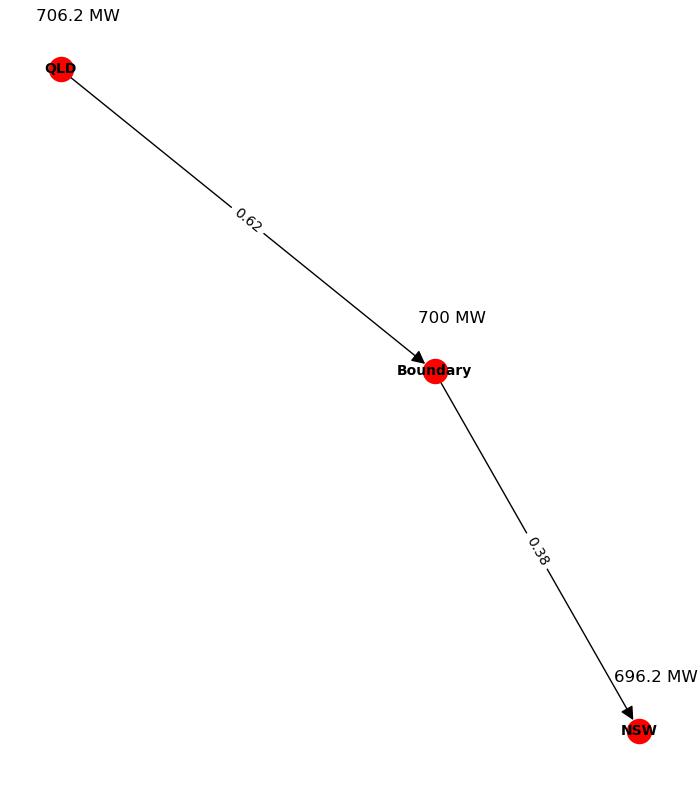Understanding AEMO’s Settlement Residue Auction (SRA)
Understanding AEMO’s Settlement Residue Auction (SRA)
TL;DR
SRA payoffs are equal to the product of the MW flow and price differential between two regions, and are set to 0 if negative. And it is based on metered MW flow, not target flow.
Contact me for any assistance with SRA market access, mark-to-market or calculating residues.
How lucrative?
According to AEMO, SRA holders made $114.85 million in 2023 Q2 alone (not including any losses made on hedges). Wondered how an SRA holder makes money? Let’s demonstrate.

Source: AEMO
How does it work?
Unlike trading an inter-regional swap contract which is ‘firm’ an SRA is a ‘non-firm’ financial derivative.
Every 5mins in the national electricity spot market, there is a settlement residue outcome on each directional interconnector. This outcome is based on the metered MW flow, and price difference between two regions connected by this interconnector. Note, in AEMO’s calculation a loss adjustment is applied to the metered flow in both regions. The basic idea is shown in the diagram below (with green territory highlighting positive price spreads).
SRA holders receive money when both the price spread and interconnector flows are positive. If only one of these conditions are met, there is a negative residue outcome. The negative residues don’t affect SRA holders, ie. their payment is set to 0. But it costs the TNSP. This is an economic signal used to encourage good transmission design by the relevant TNSP and minimise negative residue outcomes (economically, power should flow from lower priced to higher priced regions).
Import vs Export Flow
AEMO also introduces an export flow and import flow…

'From Region' and 'To Region' Inter-regional losses
If NSW was importing from QLD, MW losses from QLD to the boundary are added to the metered flow, equalling ‘export’ flow (706MW in example above), whilst losses from the boundary to NSW are deducted from the metered flow, equalling ‘import’ flow (696MW). The intention behind this calculation is to exclude the inter-regional losses from the residue payoff.
Dispatch target, metered vs settlement metered
The other thing to note is that metered MW flow can differ significantly from the targeted flow (`MWFLOW` in dispatch). But metered MW flow can also differ significantly across dispatch, trading and settlement quality data (and between settlement runs). See diagram below for a comparison of some well known MW flows.
The Calculation
The next stage in the calculation is to aggregate all physical interconnector metered flows (import and export) to respective notional interconnectors – SRA’s are only tradeable for notional interconnectors. For example, physical interconnectors NSW1-QLD1 and N-Q-MNSP1 both notionally flow between NSW1 and QLD1, and hence we aggregate their flow values to NSW1-QLD1.
Afterwards, we apply the calculation as below:
Payoff = Region A * Import – Region B * Export
Where power flows from B to A, Export > Import and Payoff >= 0 (positive residues only condition).
To be continued
Contact me for any assistance with SRA market access, mark-to-market or calculating residues.

